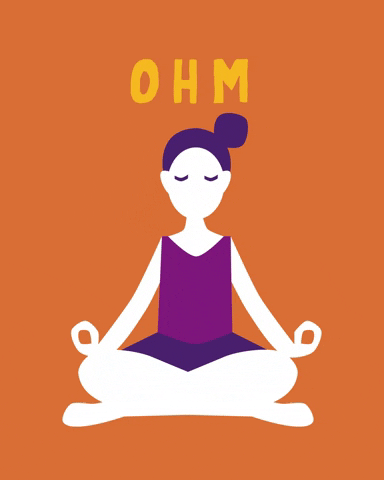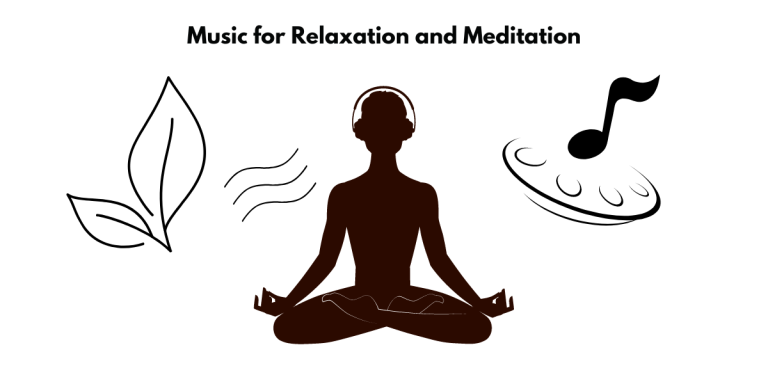What is Restorative Yoga Good For? The Top 10 Benefits of Restorative Yoga For You
What Is Restorative Yoga?
Restorative yoga is a type of yoga that focuses on relaxation, healing, and calming the mind and body. It involves holding postures for a set period (5-10 minutes) with the help of props like blankets, bolsters, and blocks to support the body while easing any tightness or tension.
The practice of restorative yoga helps to promote deep relaxation, manage anxiety, improve sleep, reduce pain and tension, and provide a gentle stretch. It is well-suited for beginners, those with limitations and injuries, or anyone dealing with stress, insomnia, or chronic pain.
Restorative yoga encourages practitioners to pay attention to their breath and become aware of any sensations or thoughts that arise during the practice, while also providing an antidote to the hustle and bustle of modern life.

What is the purpose of restorative yoga?
Restorative yoga is a therapeutic form of yoga designed to provide support and relaxation for the body. It’s rooted in the ancient yoga tradition and aims to cultivate wellness by reducing stress and tension. This exceptional yoga style aims to augment flexibility, improve balance and coordination, build strength, and enrich overall health.
Restorative yoga uses props, such as blankets, blocks, straps, bolsters, pillows, walls, stools, mats, and chairs. These aids allow the body to relax into poses more deeply and for extended periods, thereby leveraging the benefits of yoga therapy— they eliminate unnecessary strain and foster profound relaxation.
What are the Benefits of Restorative Yoga?
Restorative yoga practice can have a plethora of benefits, from improved flexibility to better sleep and reduced stress levels. Let’s explore the top ten benefits of restorative yoga below, so you can decide if it is right for you.
1. Increased muscle and joint flexibility
Restorative yoga helps to increase muscle and joint flexibility by releasing tense muscles, relieving joint aches, and helping the mind transition from stress to calm. This is achieved through a slow-paced routine in contrast to an energizing vinyasa class, which often proceeds at a quicker pace. A vinyasa class heightens flexibility and strength over time through rapid transitions from one pose to another.
2. Reduced stress and anxiety
Restorative yoga is an effective tool in reducing stress and anxiety. Performing yoga asanas in a state of mental and physical equanimity, as instructed in the ancient yoga tradition, can aid in decreasing cortisol levels—the stress hormone. Regular practice also contributes to a lowered heart rate and blood pressure.

3. Improved sleep quality
Restorative yoga has been shown to improve sleep quality in numerous ways. By allowing the body and mind to transition from stress to calm, restorative postures can directly help to ease tense muscles, relieve joint aches, and facilitate a more relaxed state of being. Additionally, regular restorative yoga practice can help to reduce cortisol levels and increase the activity of human growth hormones and glycogen synthesis, all of which are essential to essential physiological repair and memory.
4. Improved cardiovascular health
Restorative yoga has been found to improve cardiovascular health by reducing cortisol levels and decreasing the body’s “fight or flight” response. This helps to lower blood pressure and balance the heartbeat, improving overall heart health. Additionally, restorative yoga helps to boost the immune system and improve overall health, reducing the risk of developing heart disease. The practice of conscious relaxation of the body and mind helps to reduce stress and improve mental clarity, which can also contribute to better cardiovascular health.
5. Improved strength and stamina
Restorative yoga has been proven to be beneficial for improving strength and stamina. It helps to relax the body, still, a busy mind, releases muscular tension, and balances the nervous system. Additionally, research conducted at the University of California focused on 26 overweight and inactive adults with metabolic syndrome, who attended 15 restorative yoga classes over 15 weeks. Participants reported increased energy levels, improved sense of well-being, and an overall increase in strength and stamina. Furthermore, restorative yoga helps to boost the immune system, which can also have an effect on strength and stamina.
6. Improved digestion and gut health
Restorative Yoga helps to improve digestion and gut health by rebalancing the nervous system and allowing the body to take a state that allows for renewal and relaxation. When the body is in a state of relaxation, non-essential functions such as digestion, cell reproduction, intestine, and cell growth can perform their basic functions more efficiently. This helps the intestine to absorb nutrients properly and generate waste material, improving digestion and gut health.
7. Reduced back and neck pain
Restorative yoga has been proven to be an effective way to reduce back and neck pain. This is because it helps to relax the body and release tension from tight muscles. By using props such as bolsters, pillows, and blankets, the body is held in a comfortable position and able to relax completely. This allows the body to gently stretch and release areas of tension, while also promoting circulation and improving posture. It also helps to regulate blood pressure, which can help to reduce pain in the lower back, upper back, and neck.
8. Improved mental focus and clarity
Restorative Yoga helps to improve mental focus and clarity by rebalancing the nervous system to reduce stress and regulate blood pressure, thus allowing the body to better process and absorb nutrients, while also increasing concentration and clarity by calming the mind and body. Additionally, Restorative Yoga is beneficial for women during stages of hormonal change, and it helps to manage pain and supports people in times of grief or trauma.
9. Increased connectedness and compassion
Restorative yoga helps increase connectedness and compassion by allowing us to take a step back from our daily lives and create a safe space for ourselves. Through the mindfulness of the practice, we become increasingly aware of our actions and how they influence our level of comfort or discomfort, as well as our preconceived notions of our body and how we think it should look or feel. This awareness allows us to detach from any expectations and make more deliberate and attentive choices both on and off the mat. It also helps strengthen our ability to let go of any negative self-talk and replace it with positive affirmations.
10. Improved overall well-being and health
Restorative yoga is a type of yoga that is focused on relaxation and restoration, rather than on dynamic movement like other forms of yoga. It is a wonderful way to improve overall well-being and health. Research has shown that the practice of restorative yoga can have a wide range of positive health benefits, some of which include improved flexibility, a healthier lifestyle, mindfulness, self-awareness, calming of the nervous system, reduced stress, improved sleep, and even boosted immunity. Restorative yoga has also been proven to help with symptoms of depression, prevent type 2 diabetes, and even support women living with breast cancer.

What are the Step-by-Step Instructions on How to do Restorative Yoga?
Step 1: Choose a restorative yoga pose
- Choose a comfortable, quiet space free of distractions and clutter. Make sure the room is dimly lit, and dress in comfortable clothes.
- Consider using an eye pillow to cover your eyes if you’re practicing at night. You may also want to use a weighted blanket over your chest and torso to help you feel grounded and safe.
- Determine the amount of time you’d like to practice – anywhere between 15 and 60 minutes is ideal.
- Choose the right props to use. Common props used in restorative yoga include bolsters, blocks, blankets, straps, and eye pillows.
- Select the right pose for your practice. Postures that are commonly included in restorative yoga classes include chest openers, twists, hip openers, seated forward folds, gentle backbends, child’s pose, reclining bound angle pose, supine spinal twist, supported bridge pose, and legs up the wall pose.
- Get into your chosen pose and hold it for at least five to 10 minutes. Focus on your breath, and relax as much as possible.
- When you’re done, take some time to relax in a comfortable resting pose for a few moments.
Step 2: Relax your muscles
1) Begin by lying on the floor face down, with your legs straight behind you. Move your legs together, but allow them to stay relaxed. Place your hands by your head, palms down, and rest your forehead or cheek on them.
2) Lie on your back with your knees bent and your feet on the floor. Place a yoga block or pillow on the outside of each hip. Let your knees fall open to the sides, resting the outside of your thighs on the pillows or blocks.
3) Move next to a wall and face it, then lie your back on the floor, with your feet near the wall. Place your feet flat on the wall, with your knees at about a 90-degree angle. Slowly scoot your bottom closer to the wall. Allow your knees to relax out to the side, keeping your feet on the wall.
4) Sit up straight on the floor with your legs and feet out in front of you and close together. Place a pillow, cushion, or yoga bolster on your lap, and then fold over your lap (and the pillow) with your arms stretching forward toward your feet.
5) Lie on your back with your knees bent and your feet on the floor. Place a yoga block or pillow on the outside of each hip. Let your knees fall open to the sides, resting the outside of your thighs on the pillows or blocks. Your feet should be touching.
6) Finally, lie on your back with a bolster (or pillow or rolled-up towel) under your knees, and a blanket pulled over you. Let your arms rest by your sides with your palms facing up. Let your knees and feet fall to the side if that’s how they want to relax naturally.
Allowing your muscles to relax during restorative yoga helps to reduce stress and tension in the body, improving digestion and calming the nervous system. Give these poses a try and enjoy the benefits of restorative yoga.
Step 3: Release stress
Restorative yoga helps to release stress by calming the nervous system and allowing the body to relax and turn inward. For example, a restorative pose such as Wide Angle Forward Fold can be beneficial for stress relief, as it offers an amazing stretch for the hamstrings, booty, and back. It also helps improve digestion, calm the nervous system, and lower blood pressure.
Step 4: Explore your mind-body connections
Exploring your mind-body connections can help with restorative yoga by helping you become more aware of the physical sensations and thoughts you experience. This increased awareness can help you to make more conscious and deliberate choices in your practice, both on and off the mat. As you become increasingly aware of the subtle cause-and-effect relationship between your poses, breathing, and overall level of well-being, you can begin to make changes in your practice and your lifestyle to reduce stress and tension that may be held in your body.

Step 5: Calm your nervous system
1: Find a quiet place to practice. Try to keep distractions and noises to a minimum so that you can really relax and focus. It’s important that you feel safe and secure.
2: Make sure you have enough blankets and layers to keep you warm. It’s common to experience a drop in body temperature during practice, so it’s good to have extra blankets on hand.
3: Consider using an eye pillow or a scarf to cover your eyes. The darkness can have a soothing effect.
4: Try experimenting with weight. You can place a sandbag or a folded blanket over the heart, belly, or pelvis to provide a feeling of safety and security.
5: Set a timer. It usually takes 10-15 minutes to achieve the relaxation response.
6: Focus on your breath and get into a rhythm. Slow down the pace of your breaths and take deep, full breaths.
7: As you relax deeper, your body will start to cool down and you’ll likely want more layers or blankets.
8: Allow yourself to be still and stay in the present moment. Don’t try to force your mind to silence; just observe your thoughts and feelings without judgment.
Step 6: Reap the benefits of conscious relaxation
First, find somewhere quiet, so that loud or sudden noises won’t startle you and take you out of a state of relaxation. Have layers or blankets to keep you warm, as your body temperature will cool down as you relax deeper into your practice. You can also use an eye pillow or scarf to cover your eyes and encourage soothing darkness. To add an extra level of comfort and safety, try experimenting with weight. You can place a sandbag or heavier blanket over your heart, belly, or pelvis. Lastly, set a timer so that you can stay in the relaxation response for 10-15 minutes.
Step 7: Practice deep awareness exercises
Deep awareness exercises are an important part of restorative yoga. These exercises help to cultivate a heightened sense of self-awareness and connection to the body, mind, and spirit. Examples of these exercises include:
1) Breath Awareness: Focusing on the breath is one of the best ways to become more mindful and aware of your body. During restorative yoga, pay close attention to each breath, noting the sensations as you inhale and exhale.
2) Body Scanning: Body scanning involves slowly bringing your awareness to each part of your body, from head to toe. Notice any physical sensations that arise, such as tension or tightness. Relax any area of the body that is feeling tense or tight.
3) Visualization: Visualization is an effective way to focus and relax. Close your eyes and imagine yourself in a peaceful and calming place. Focus on any details that come to mind, such as colors or textures.
4) Mantra: Chanting a mantra is an effective way to bring your awareness within. You can choose a mantra that resonates with you, such as a phrase that reminds you of your intentions or values. Chant the mantra slowly and mindfully.

FAQs
Is restorative yoga good for beginners?
Yes, restorative yoga is a great practice for beginners. It encourages a slow and relaxed pace and can help to gently stretch the body, manage anxiety, improve sleep, reduce tension, and decrease pain. It involves holding poses for around five to ten minutes, sometimes with the aid of props like blocks and bolsters. Restorative yoga is also an excellent bridge to meditation, as it allows practitioners to create a safe space to let go and ground themselves. Furthermore, it is a very safe practice and can be adapted to accommodate any age and experience level. Finally, it helps to build greater self-awareness, as it encourages dedication, patience, skill, and courage. Therefore, due to its numerous benefits, it is clear that restorative yoga is an excellent practice for beginners.
What is the main focus of restorative yoga?
The main focus of restorative yoga is to relax the body, mind, and spirit by letting go of tension and cultivating mindfulness. It stimulates the parasympathetic nervous system, which slows the heart rate, regulates the blood pressure, and relaxes the body. The practice uses props such as bolsters, blankets, blocks, and belts to help the body to be in the most comfortable and supported position possible. Restorative yoga can help to improve flexibility and boost the immune system while also facilitating self-transformation and helping the individual reconnect with their divine nature. The actual effort involved is the willingness to look at and relax the body, allowing the breath to come in more to soften any tension that may be present.
How often should you do restorative yoga?
You can do restorative yoga as often as you’d like, as it is a gentle and calming practice. A typical restorative yoga class lasts between 20 and 60 minutes and usually involves five to six poses, held for five to 10 minutes each. Many practitioners use restorative yoga every day for at least a few minutes while others may turn to it once or twice a week or when they need to relieve stress and anxiety. Restorative yoga is great for beginners, as well as those with limitations and injuries, and can be done anytime, anywhere.
- 101 Best Workplace Wellness Ideas For Employees And The Wellness Program - January 2, 2024
- What is Restorative Yoga Good For? The Top 10 Benefits of Restorative Yoga For You - December 20, 2023


